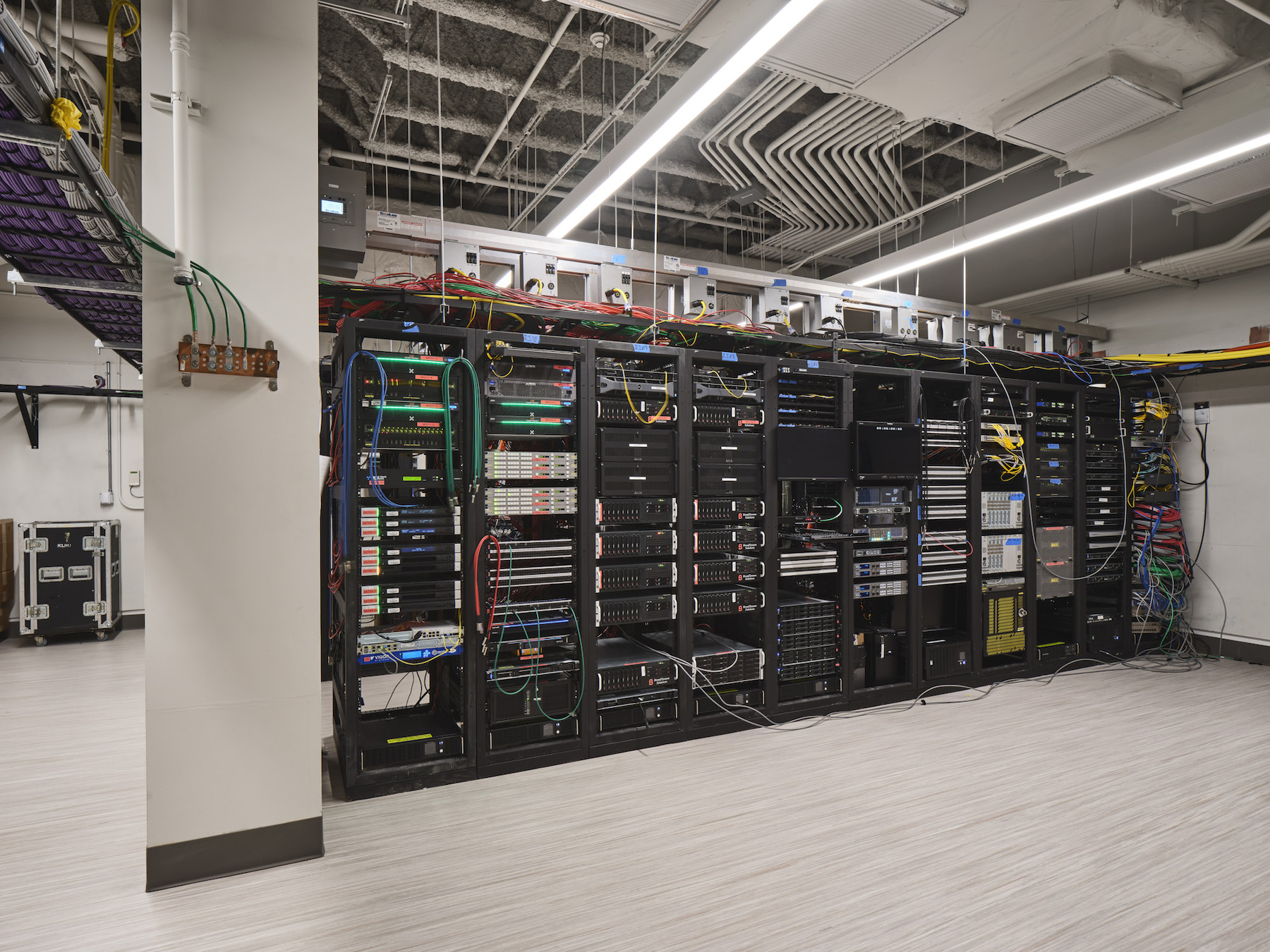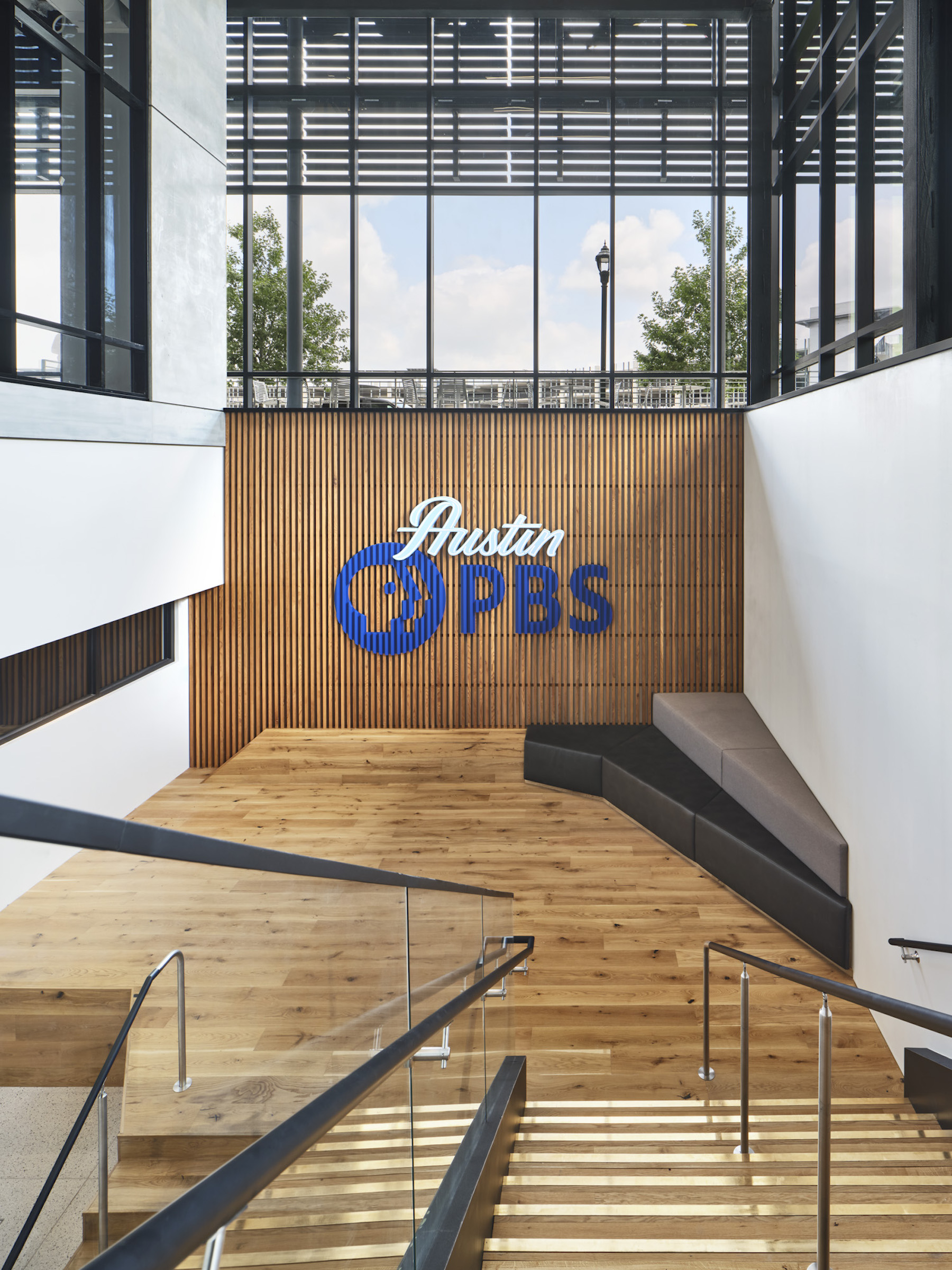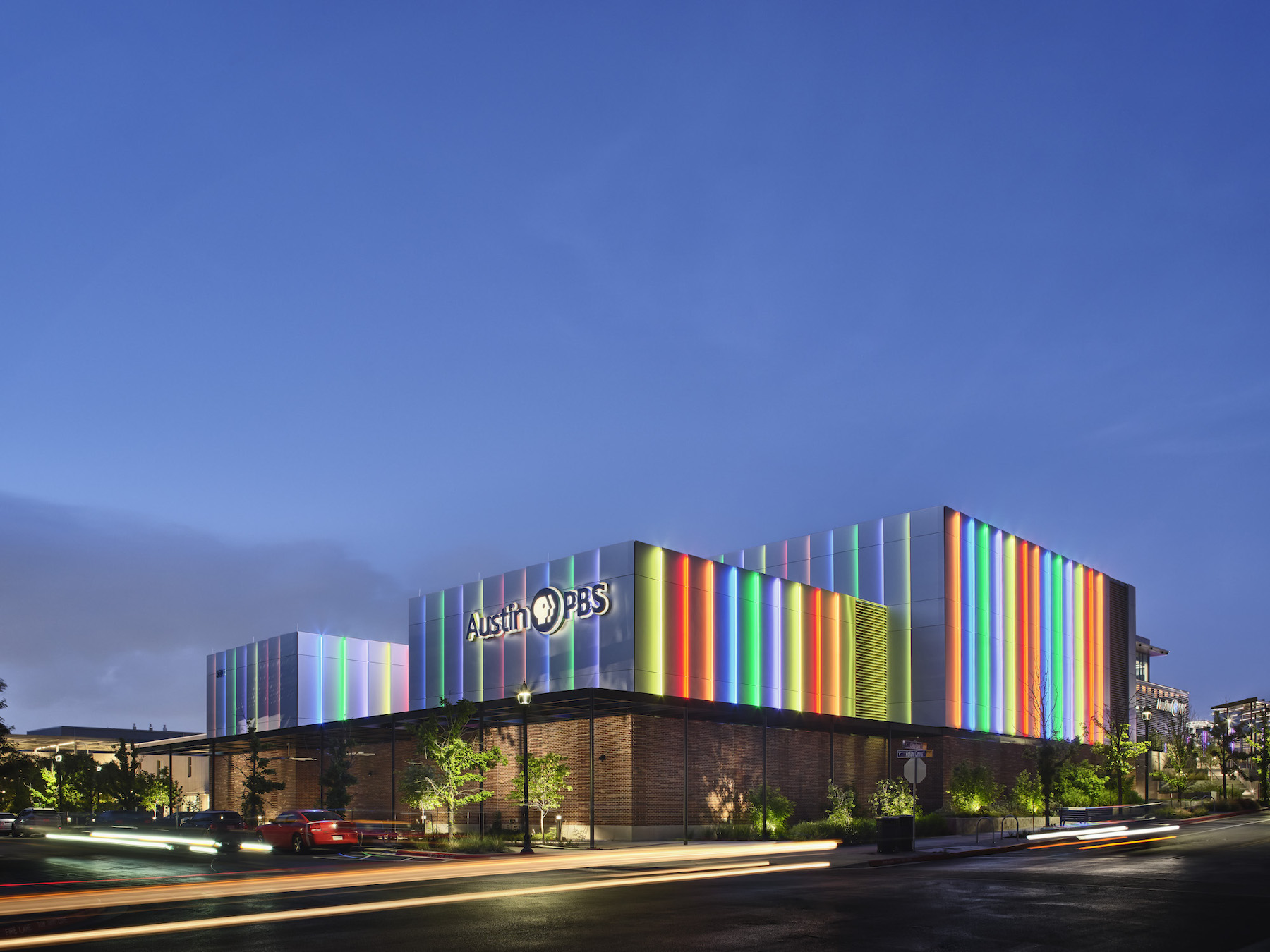Since the 1970s, Austin PBS, birthplace of the Austin City Limits TV series, has been based inside the communications building on the University of Texas campus—a space it has long outgrown. In 2017, the design and planning began for a new state-of-the-art facility located in Austin Community College’s Highland Campus, a former shopping mall.
Designed by Austin architecture firm Studio Steinbomer, the roughly 70,000-square-foot facility, opening this year, has three TV studios. One studio serves as a live audience and community outreach venue. This 6,500-square-foot space has retractable seats and can be reconfigured for live music, town halls, and other productions with live audiences. The other two studios accommodate non-audience programming.
The three studios share walls with workspaces, so the design team placed prime importance on acoustics and sound deadening. The live-audience studio has a floating slab, a silent air conditioner, and highly absorptive materials. So a meeting in the next-door conference room would be undisturbed by a live music performance on the other side of its walls.
Austin PBS’s new home is the first 12-gig digital broadcast network facility for any public television in the US, according to a statement. To highlight the state-of-the art tech, the architects kept much of the 300 miles of cable fully exposed, housing it in custom channels cut out of the ceiling.
A large portion of the building is partially subgrade. So to mitigate the feeling of being underground, the lighting quality mimics skylights and the sun’s movement, creating circadian rhythms that allow people to sense the time by the quality of light. Interior finishes include a mix of bright colors, natural warm wood tones, and nature-simulating colors. And whimsical, industry-specific details include On-Air lights indicating occupied bathrooms.
On the Building Team:
Owner: Austin Community College
Developer: RedLeaf Properties
Design Architect - Exterior: Gensler Austin
Design Architect, Architect of Record - Interiors: Studio Steinbomer (interior remodel level one, and interior of addition)
MEP engineer: Bay & Associates Inc.
Structural engineers: Cardno and Tsen Engineering
General contractor: Rogers-O’Brien Construction
Construction manager: PMA (Project Management Advisors)



Related Stories
| Aug 11, 2010
Construction unemployment rises to 17.1% as another 64,000 construction workers are laid off in September
The national unemployment rate for the construction industry rose to 17.1 percent as another 64,000 construction workers lost their jobs in September, according to an analysis of new employment data released today. With 80 percent of layoffs occurring in nonresidential construction, Ken Simonson, chief economist for the Associated General Contractors of America, said the decline in nonresidential construction has eclipsed housing’s problems.
| Aug 11, 2010
Billings at U.S. architecture firms exceeds $40 billion annually
In the three-year period leading up to the current recession, gross billings at U.S. architecture firms increased nearly $16 billion from 2005 and totaled $44.3 billion in 2008. This equates to 54 percent growth over the three-year period with annual growth of about 16 percent. These findings are from the American Institute of Architects (AIA) Business of Architecture: AIA Survey Report on Firm Characteristics.
| Aug 11, 2010
Bowdoin College has country's first newly constructed LEED-certified ice arena
Bowdoin College's new Sidney J. Watson Arena, dedicated January 18, 2009, has become the first newly constructed ice arena in the United States to earn coveted LEED (Leadership in Energy and Environmental Design) certification from the United States Green Building Council (USGBC).
| Aug 11, 2010
CHPS debuts high-performance building products database
The Collaborative for High Performance Schools (CHPS) made a new tool available to product manufacturers to help customers identify building products that contribute to sustainable, healthy, built environments. The tool is an online, searchable database where manufacturers can list products that have met certain environmental or health standards ranging from recycled content to materials that contribute to improved indoor air quality.
| Aug 11, 2010
VA San Diego Healthcare System Building 1 Seismic Correction
San Diego, Calif.
Three decades after its original construction in the early 1970s, the Veterans Affairs San Diego Healthcare System Building 1 fell far short of current seismic codes. This not only put the building and its occupants—patients, doctors, nurses, visitors, and administrative staff—at risk in the event of a major earthquake, it violated a California state mandate requiring all hospitals to either retrofit or rebuild.
| Aug 11, 2010
Green Building Initiative launches two certification programs for green building professionals
The Green Building Initiative® (GBI), one of the nation’s leading green building organizations and exclusive provider of the Green Globes green building certification in the United States, today announced the availability of two new personnel certification programs for green building practitioners: Green Globes Professional (GGP) and Green Globes Assessor (GGA).
| Aug 11, 2010
Brandeis University's new Shapiro Science Center completed
Payette, a leading architectural design firm specializing in complex buildings for medical and scientific research, academic teaching, and healthcare, announced today the completion of Phase One of the 175,000 square foot Carl J. Shapiro Science Center at Brandeis University in Waltham, Mass. Phase One of the complex is 101,045 GSF and Phase Two is planned for 74,080 GSF.







